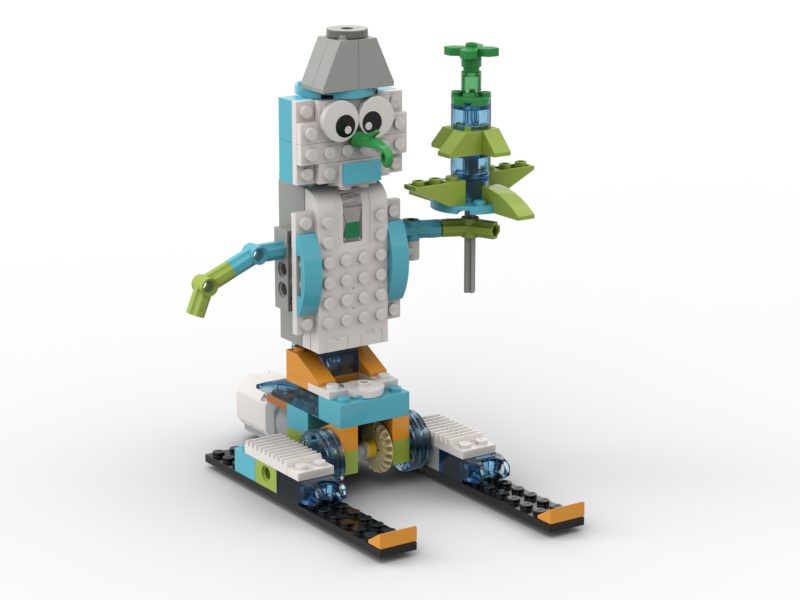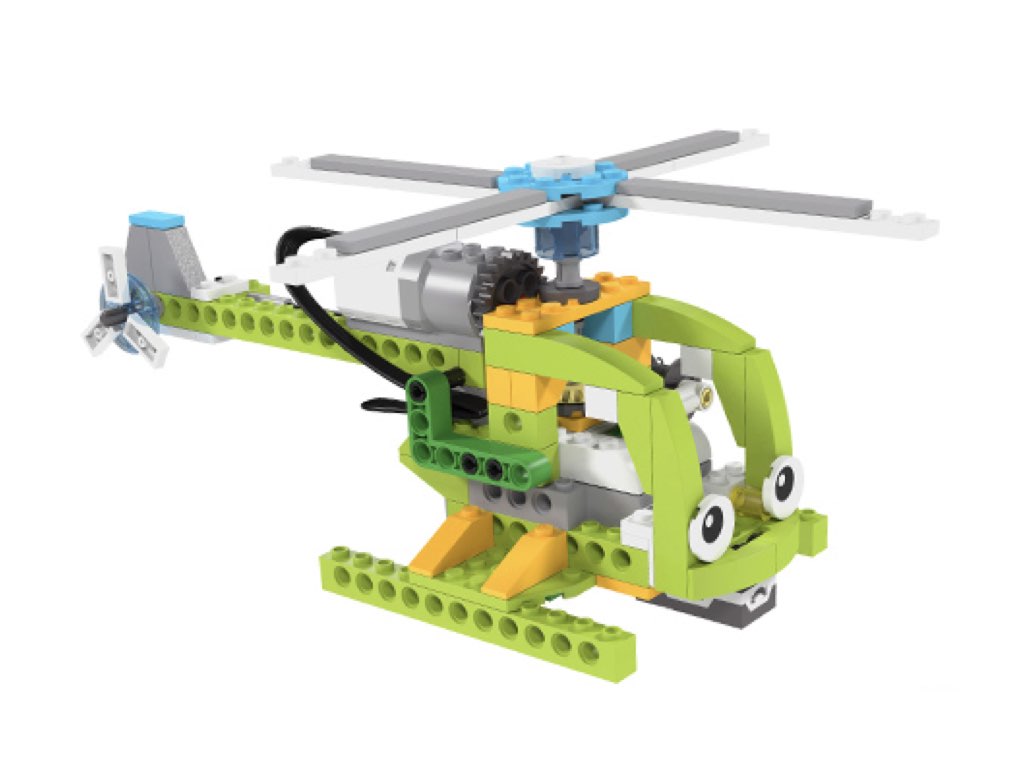

Some people tape the wire to the side of the motor to stop it getting yanked. Unfortunately the wire going into the motor is not very strong so be careful not to pull it. A nice cheap addition are the twin LED lights from the power functions range which can be controlled using the WeDo software. Lego produced an extension kit (see below) which added some quite challenging models but you will need to buy another software disc to access these instructions. You may be able to pick one up second hand from Ebay but you will need to buy the software separately – and it only works on a laptop. Still lots of fun, full of great activities and cool models to help you learn about programming and engineering. One of the main differences from the newer 2.0 is that this kit is connected to the computer by a wire (tethered) where as WeDo 2.0 is connected by a Bluetooth connection and is therefore ‘wireless’. It is being discontinued at the end of 2017. Teachers and parents of younger LEGO enthusiasts will also find the book a helpful guide to introducing the world of robotics in a dynamic and fun way.The original Lego WeDo launched in 2009, renamed Lego WeDo 1.0 after the new 2.0 kit was put on sale. LEGO enthusiasts and students who want to prototype solutions to challenges using mechanical and computer science engineering. Solve problems by using an iconographic programming language for the implementation of algorithms.Understand the mechanics behind animal motions by developing robotic prototypes and how they interact with our environment through the use of sensors and actuators.Create your own LEGO WeDo 2.0 inventions using the design principles in this book.With Robotics Models Using LEGO WeDo 2.0 you?ll create solutions to specific, tangible problems while building fun and engaging LEGO models and learning to program them to accomplish basic tasks. All activities are carried out following the methodology created by the authors called 5 phases of educational robotics (5PER), which are: design, construction, programming, testing and, finally, documenting and sharing It relies on observation, measurement, experimentation and formulation, analysis, and modification of hypotheses. The methodology used is designed to help you discover new knowledge, that has been used historically in science. The authors's expertise working in education, mathematics, programming, electronic, and robotics came together to produce this book.


For every model, go through all the phases to explore each robot?s functionality, solve problems using creativity, identify issues, and propose solutions. Simultaneously, make your model ?come to life? by incorporating powerful yet simple programming techniques. You'll learn the basics behind different mechanisms and principals required to build walking robots.


 0 kommentar(er)
0 kommentar(er)
